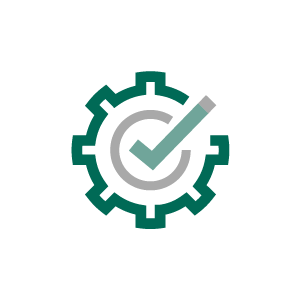What is RPA?
Robotic Process Automation (RPA) is an automation technology that uses software bots to manipulate systems and applications at the user interface-level. Robots interact with systems the same way a human user does—clicking buttons, typing login credentials into a website, reading PDFs, and so on.
Opportunities for automation exist virtually anywhere because RPA is scalable, flexible, and efficiently integrates workflows across systems, applications, and departments.
Key Benefits of RPA Solutions
Robotic process automation solutions boost productivity, improve accuracy, and help your organization grow by giving repetitive, manual workloads to software robots. With RPA software, you can:
Mimic Manual Tasks
Automate Integrations
Enable Innovation & Collaboration
Scale Your Digital Workforce
RPA Technology: The Four Ways to Use RPA
Learn more about RPA and explore the different types of robotic process automation in our free white paper.
What is an RPA Software Robot?
Robots in business didn’t come out of nowhere. The truth is that this is a new name for a familiar concept. Software robots, or bots, usually refer to what most people know as agents—individual devices running the automation solution. Some RPA vendors also use the term robot to refer to an automated process, or even to each occurrence of a process, although these definitions are less common.
A robot can be installed on a PC, a physical server, or a virtual machine. While a robot can be configured for an endless variety of tasks, they can be divided into two distinct types: attended and unattended robots. RPA allows for seamless integration of attended and unattended processes.
Attended Robots
Unattended Robots
The key to scaling your digital workforce is employing highly flexible, optimized software robots. Automate robots are enterprise-grade digital workers that offload, support, and augment existing business processes and workflows. Some of the most popular types of automation bots include:
Browse 200+ automation connectors that are preconfigured and available for free download on the Automation Connector Hub.
What's the Difference Between RPA and AI?
Robotic Process Automation (RPA) and Artificial Intelligence (AI) are different technologies for different tasks. RPA tools use software bots to interact with systems the same way a human user does, like clicking buttons and extracting data. AI tools perform tasks that normally require human thought to complete such as data classification and categorization for intelligent process automation.
RPA is great at handling unstructured data that is organized, clearly defined, and searchable—like Excel spreadsheets and forms. AI can tackle your unstructured data that is more qualitative—like transcripts and email messages—and make that data more useable across your organization.
Many businesses are starting to combine RPA technology with AI-driven software like intelligent document processing to help maintain control of critical data with more speed and accuracy to supercharge automation efforts.
RPA Tools for Any Industry
Organizations across every sector and function are turning to RPA to optimize resources and maximize efficiency—from healthcare to financial services and insurance to human resources and call center automation. RPA bots can easily manage processes spanning departments, locations, and systems—on premise or in the cloud.
How to Implement RPA Solutions
No matter where you are in your RPA implementation process—from getting ready to implement your first software bots to increasing your competitive edge through strategic automation—we've developed a comprehensive library of resources for every step of the way. Click on an implementation step below to get started.
Assess Automation Opportunities

The key to automation success is finding the right place to start. While you may be tempted to start big and try to automate everything, it’s important to start small. Take a look at some of your most tedious, repetitive processes that take up the valuable time you could be spending on more strategic work. Learn More >
Execute a Proof of Concept

Once you have an RPA project in mind, it’s time to prove its worth. Schedule time with our automation experts for a free, 4-hour proof of concept to go over your current process, your vision for the future, and the criteria for successful completion. Learn More >
Plan your Center of Excellence

Digitally transforming your business with automation is about more than just the tools. A center of excellence framework will help you identify the key people, processes, and technology necessary to maximize the benefits of RPA. Learn More >
RPA Resources & Videos
Dive deeper into the benefits of automation with the following resources:
Processes to Automate
A series of short videos demonstrating popular use cases
RPA Success Stories
A series of short videos on how various organizations use RPA
Begin Your RPA Journey
A series of videos to help you start your RPA journey